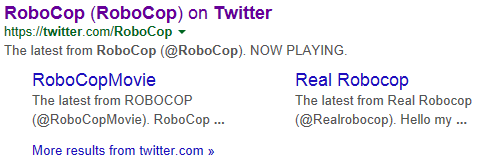Sir Tim Berners-Lee(b.1955)-
Berners Lee is a British computer scientist who invented the World Wide Web. Timothy John Berners Lee was born on 8 June 1955 and grew up in London. He studied physics at Oxford University and became a software engineer.
In 1980, while working at CERN, the European Particle Physics Laboratory in Geneva, he first described the concept of a global system, based on the concept of 'hypertext', that would allow researchers anywhere to share information. He also built a prototype called 'Enquire'.
In 1984, Berners Lee's returned to CERN, which was also home to a major European Internet node. In 1989, Berners Lee published a paper called 'Information Management: A Proposal' in which he married up hypertext with the Internet, to create a system for sharing and distributing information not just within a company, but globally. He named it the World Wide Web.
He also created the first web browser and editor. The world's first website, http://info.cern.ch, was launched on 6 August 1991. It explained the World Wide Web concept and gave users an introduction to getting started with their own websites.
In 1994, Berners Lee founded the World Wide Web Consortium at the Laboratory of Computer Science (LCS) at the Massachusetts Institute of Technology in Boston. He has served as director of the consortium since then. He also works as a senior research scientist at LCS which has now become the Computer Science and Artificial Intelligence Laboratory.
ARPAnet-
The precursor to the Internet, ARPANET was a large wide-area network created by the United States Defense Advanced Research Project Agency (ARPA).
Established in 1969, ARPANET served as a testbed for new networking technologies, linking many universities and research centers. The first two nodes that formed the ARPANET were UCLA and the Stanford Research Institute, followed shortly thereafter by the University of Utah.
CERN-
At CERN, the European Organization for Nuclear Research, physicists and engineers are probing the fundamental structure of the universe.
They use the world's largest and most complex scientific instruments to study the basic constituents of matter – the fundamental particles this gives the physicists clues about how the particles interact, and provides insights into the fundamental laws of nature.
Founded in 1954, the CERN laboratory sits astride the Franco-Swiss border near Geneva. It was one of Europe's first joint ventures and now has 21 member states.
Broadband-
Broadband is the name given to any fast, permanent internet connection. It can be delivered by cable, satellite, mobile, fibre optics and ADSL (the most popular way).
When the internet revolution began, users accessed the net via dial-up and a ‘modem’ - a piece of hardware that converts signals from your computer so they can travel down a telephone line, and vice-versa. (A modem is a bit like an interpreter who translates back and forth between two languages.)
The difference between dial-up and broadband is like the difference between a country lane and a motorway. Replace a single band with separate bands for uploading, downloading and voice - and you speed up traffic many times over. Instead of one, narrow band you get a broader band – hence ‘broadband’.
Dial-up-
Refers to connecting a device to a network via a modem and a public telephone network. Dial-up access is really just like a phone connection, except that the parties at the two ends are computer devices rather than people. Because dial-up access uses normal telephone lines, the quality of the connection is not always good and data rates are limited. In the past, the maximum data rate with dial-up access was 56 Kbps (56,000 bits per second), but new technologies such as ISDN are providing faster rates.
Hypertext (HTML) -
HTML is a language for describing web pages. HTML stands for Hyper Text Markup Language, HTML is a markup language. A markup language is a set of markup tags, the tags describe document content. HTML documents contain HTML tags and plain tex, HTML documents are also called web pages
Folksonomy –
RSS –
XML –
Convergence –
Audience –
Institutions –














